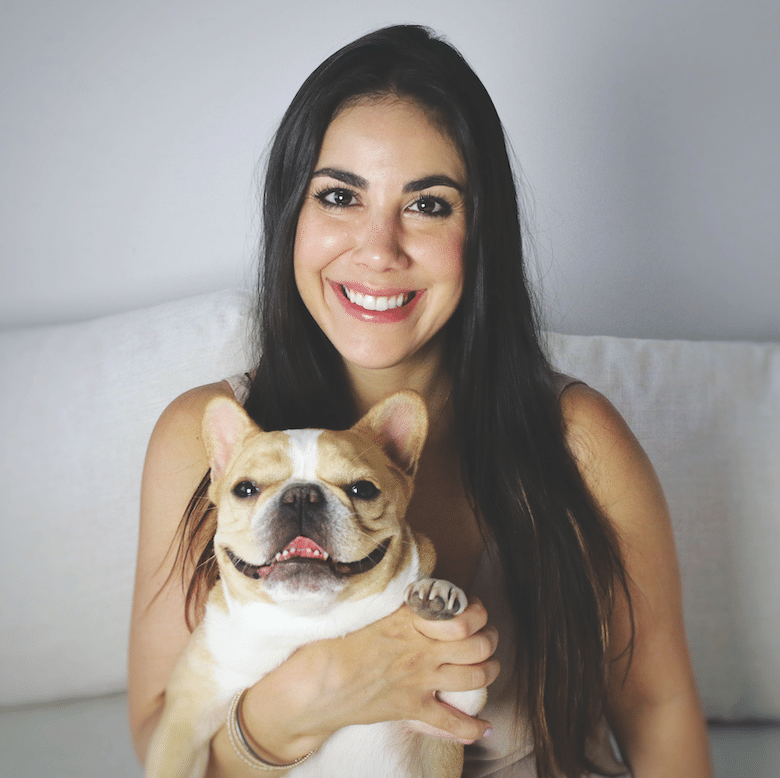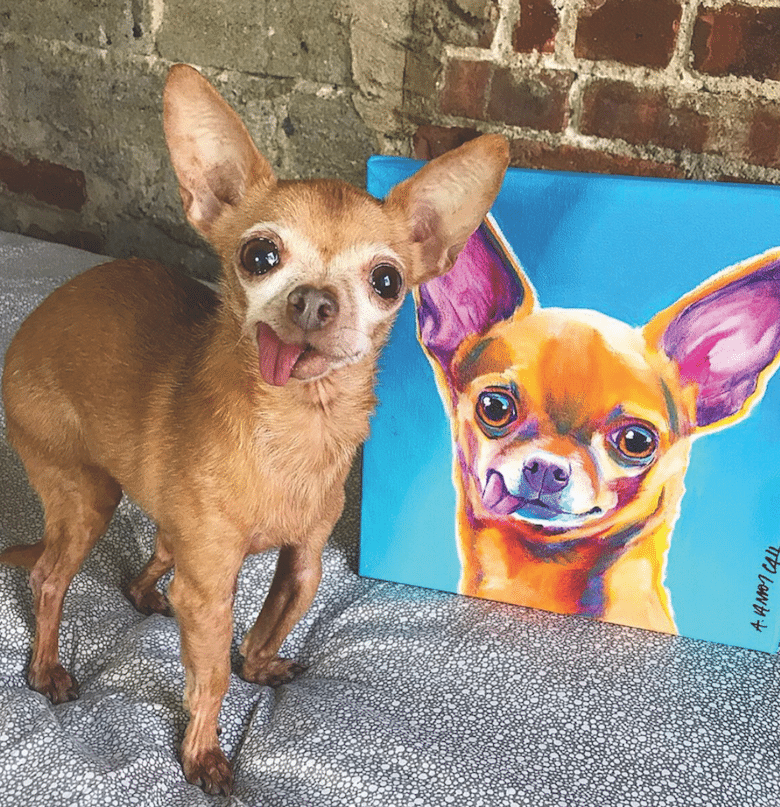Instagram Dogs with a Cause
Dressing up in costumes, taking business trips with her humans and dining around New York City were just a few of the social media posts that gained Chloe @chloetheminifrenchie (and her owner, Loni Edwards) nearly 200,000 Instagram followers within a few months of starting the account.
So, in 2017, when 4-year-old Chloe died from a medical error at a veterinary clinic in New York, it was devastating not only for Loni but for her fans.
Loni, a lawyer and owner of The Dog Agency, a talent management agency for the top social media animal influencers in the world, used her grief to bring awareness to the issue that after a pet’s death due to medical error, owners typically get compensated for the cost of adopting another dog, but there’s no compensation for the emotional stress.
Through Chloe’s account, she launched a campaign that raised $20,000 through the Animal Legal Defense Fund, an organization that furthers the legal rights of animals.
Even though Chloe and Loni had a significant social media following, the most prominent pet influencers say the size of your fan base isn’t what is most important when you are promoting a cause.
With the right messaging, photos and purpose, any account — especially coming from an adorable dog — can inspire change.
Here, three social media influencers share their tips for promoting a cause through your dog.

Photo: MrasWonderland | Getty Images
Make it personal
After Chloe’s death, Loni’s campaign was a way for Chloe’s followers to honor the mini Frenchie, but also support Loni.
“The best strategy is to have a cause that you’re really connected with,” Loni says.
In the 6 years that Joey Teixeira and his partner Michael Keeney have lived with Mervin @mervinthechihuahua, the 3-pound pup has endured numerous life-threatening health issues, which Joey shares with Mervin’s 125,000 followers to raise awareness of canine medical conditions. He also gets people talking about the plight of animals with special needs.
“That’s kind of a theme of our account,” says Joey, who’s also rescued a hearing-impaired dog as well as two blind cats.
Joey and Michael are involved with the human Special Olympics. This year, because the event is virtual, they posted pictures of Mervin “supervising” over the computer as a way to introduce Mervin’s fans to the event.

Mervin, a 3-pound pup has endured numerous life-threatening health issues, which Joey Teixeira shares with Mervin’s 125,000 followers to raise awareness of canine medical conditions.
Partner up
Many private and independent rescue groups need help generating social awareness and fundraising.
Those smaller, local groups are also typically more responsive to partnering than the larger national organizations that don’t have the capacity to answer each email, Joey says.
Be proactive: Reach out to different groups and ask what you can do to help promote their messages.
“The smaller ones … will need more help,” Loni says.
Always research each organization first to make sure it aligns with your mission, has a good community standing and can clearly share how incoming funds are utilized.

@tunameltsmyheart, a 10-year-old chiweenie with an endearing overbite asks followers at the end of each year for recommendations of shelters or organizations that need financial support.
Get interactive
Courtney Dasher, the human behind @tunameltsmyheart, a 10-year-old chiweenie with an endearing overbite and 2.1 million Instagram followers, asks Tuna’s followers at the end of each year for recommendations of shelters or organizations that need financial support.
She vets the suggestions, makes sure the shelters are no-kill, then promotes them on her page.
“(Your followers) are the ones who are supporting, giving, donating through your recommendations,” she says. Including them will connect them to your mission and give you leads to the local organizations that need the most help during crises.
Courtney rescued Tuna from an adoption day at a farmer’s market in Los Angeles in 2010. Since then, she’s been an ambassador for rescuing dogs.
“My main mission is to bring people joy and laughter,” she says, by posting pictures of Tuna in costumes, at the park with her daughter and making funny faces.
But, he’s also a rescue, she continues, “and that’s something that’s important to share with people.”
Last year, Courtney encouraged her followers to spread awareness about adoption by posting photos of their animals and sharing their adoption stories on their own pages.
Keep it relevant, interesting and unique
Followers will start to overlook your message if the photo and text are redundant.
Share personal stories, ongoing fundraisers, give updates on your mission, explain new laws that are passed and when a petition is available for signing.
“Find ways to make it organic,” Loni says. “Keep it relevant and interesting.”
The same advice goes for hashtags: Creating your own, unique hashtags specific to your cause or your dog will get the most attention.
You never know who will come across your post, Courtney says. “Maybe it’s a celebrity and then they post it on their account. It’s so cool how it all works.”
